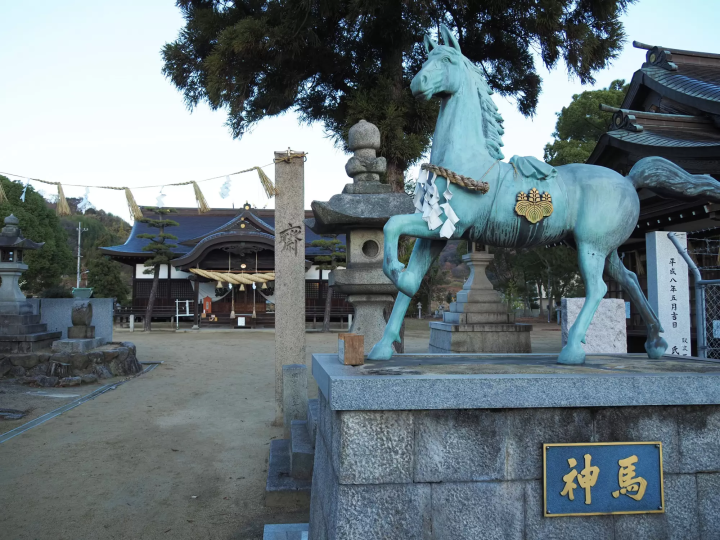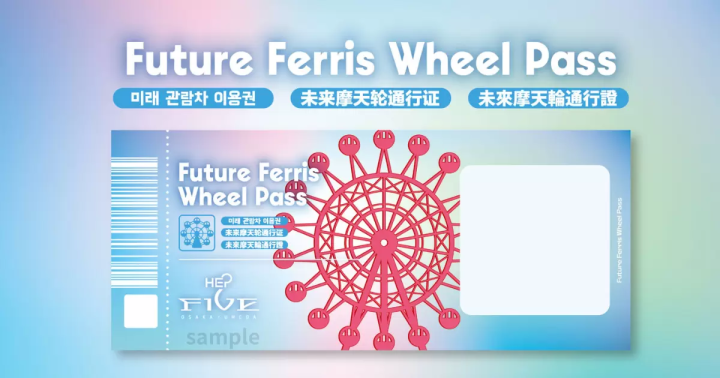Tenryuji Temple, Kyoto: A Must-Visit in Arashiyama
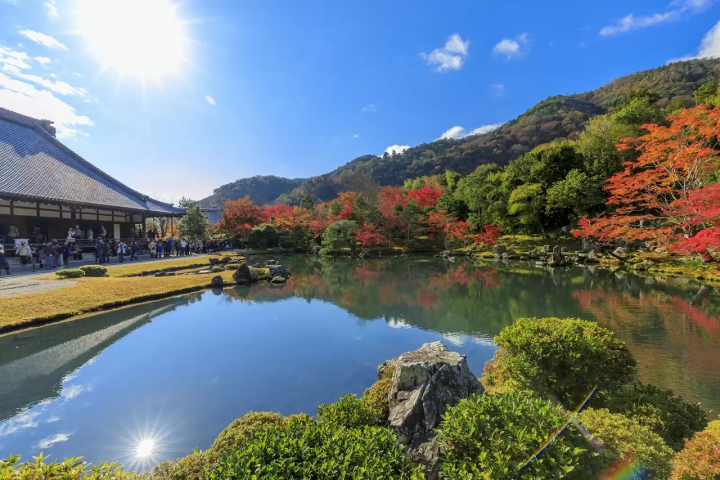
This visitor guide to Kyoto's Tenryuji Temple offers details on its dragon paintings and Japanese garden, opening hours, entrance fee, and restaurants nearby.
Tenryuji Temple: Location and Significance
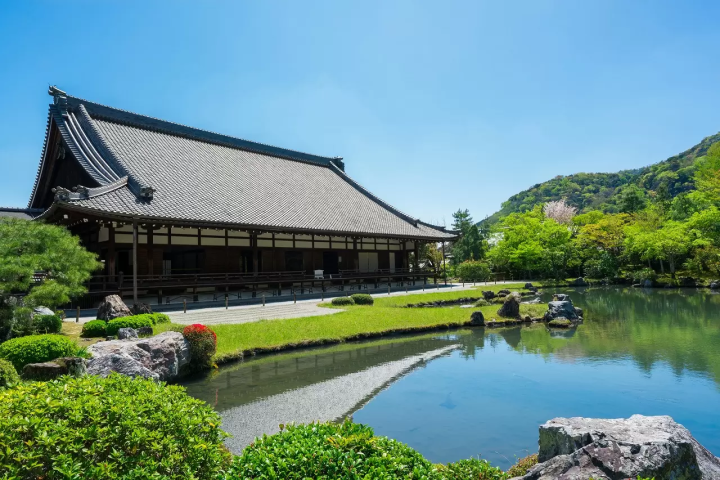
Photo by Pixta
Tenryuji Temple, located in Kyoto's Arashiyama area, is a picturesque World Heritage site that attracts visitors from around the globe.
A Rinzai Zen Buddhist temple, its serene grounds and stunning architecture make it a must-visit destination for anyone exploring Kyoto. Tenryuji is renowned for its Cloud Dragon painting adorning the ceiling of the Hatto (Dharma) Hall.
The temple also serves as a gateway to the beautiful Arashiyama bamboo grove, which is just a five-minute walk from the north gate.
Tenryuji Temple Opening Hours
Tenryuji Temple is open daily from 8:30 AM to 5:00 PM, with the last admission at 4:50 PM. During the autumn foliage season, from November 15 to 30, the garden opens earlier at 7:30 AM, while the temple halls remain open during their regular hours starting at 8:30 AM.
Admission Fees at Tenryuji
Admission to Tenryuji Temple varies depending on the areas you wish to explore.
Access to the famous Sogenchi Garden costs 500 yen for high school students and older, 300 yen for elementary and middle school students, and is free for preschool children.
If you want to enter the temple buildings, including the Honden (main hall), an additional fee of 300 yen applies.
To view the Cloud Dragon painting in the Hatto (Dharma Hall), there is a separate fee of 500 yen. The Hatto is open on weekends, public holidays, and during specific periods in spring and autumn.
Access to Tenryuji Temple
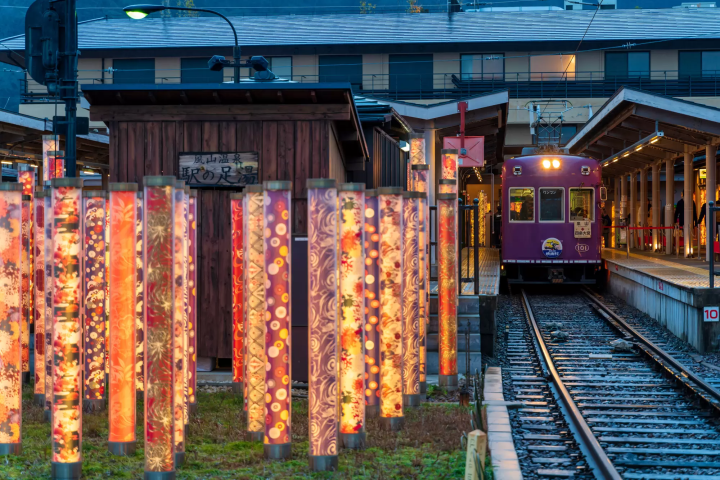
Photo by Pixta
The nearest station to Tenryuji Temple is Arashiyama Station on the Randen Line, a tram service. It is about a 5-minute walk from the station to the temple.
JR Saga-Arashiyama Station is approximately a 13-minute walk from Tenryuji, while Hankyu Arashiyama Station is about a 15-minute walk.
If you depart from Kyoto Station, we recommend taking the JR Sagano Line (also known as the San’in Main Line) to Saga-Arashiyama Station. The journey takes approximately 10 to 15 minutes.
Alternatively, you can take Kyoto City Bus numbers 11, 28, or 93 to the Arashiyama Tenryuji Mae bus stop, which is located close to the temple’s entrance.
Dress Code at Tenryuji Temple
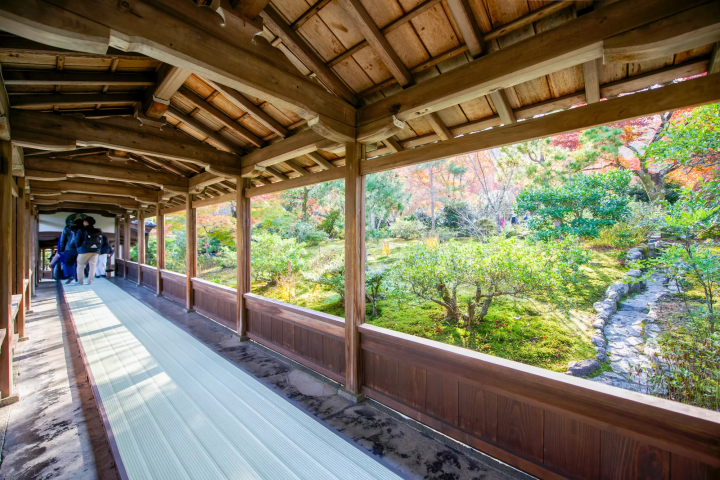
Photo by Pixta
When visiting Tenryuji, please wear clothing appropriate for a sacred site.
Since visitors are typically asked to remove their shoes at the entrance, wearing socks is essential. This is especially important during autumn and winter, as the temple’s interconnected halls are connected by covered walkways, and the timber floors can feel quite cold.
What to See at Tenryuji: Zen Art and Japanese Garden
Honden (Main Hall)
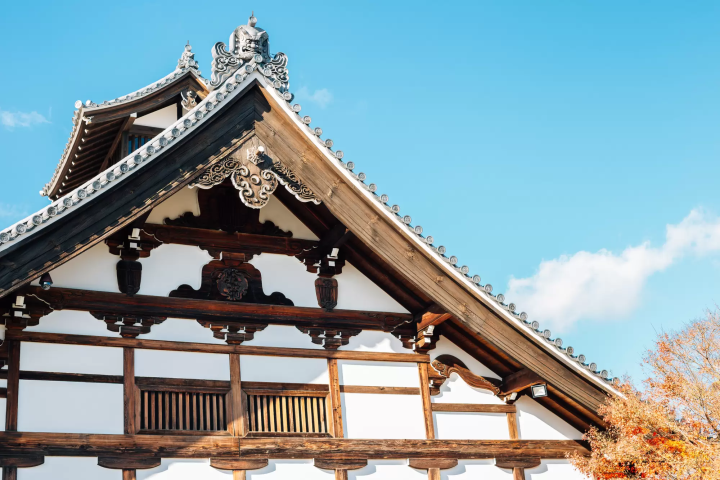
Photo by Pixta
The main hall of Tenryuji Temple, or the Honden, is a must-see for its historical significance and tranquil atmosphere.
Tenryuji was established in 1339 by shogun Ashikaga Takauji (1305-1358) in memory of Emperor Go-Daigo (1288-1339). One of the rooms in the main hall has an altar dedicated to Emperor Go-Daigo with fascinating details regarding this historical background.
Reconstructed in the late 19th century after several fires, the main hall features tatami flooring and sliding doors that open to the Sogenchi Garden, seamlessly merging indoor and outdoor beauty.
The Honden is also renowned for its ornate ceiling paintings and the peaceful view of the garden, making it an essential stop for appreciating the temple’s harmonious design and serene ambiance.
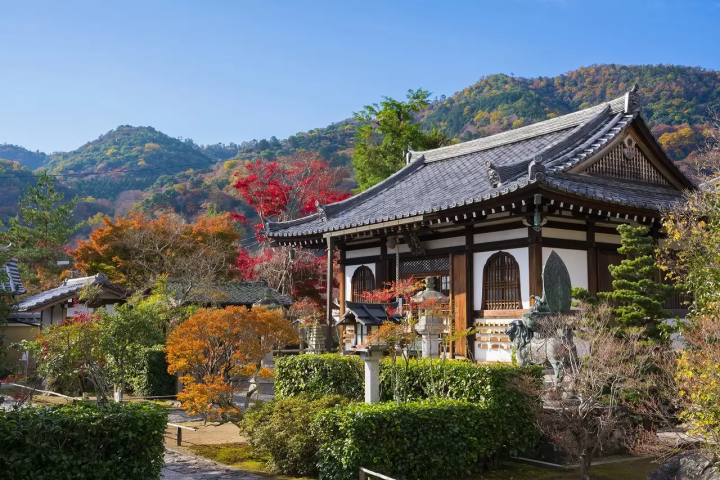
Photo by Pixta
The main hall is connected to other structures of the temple complex through covered wooden staircases and corridors, making it truly fascinating to explore.
Japanese Garden: Splendid in Autumn!
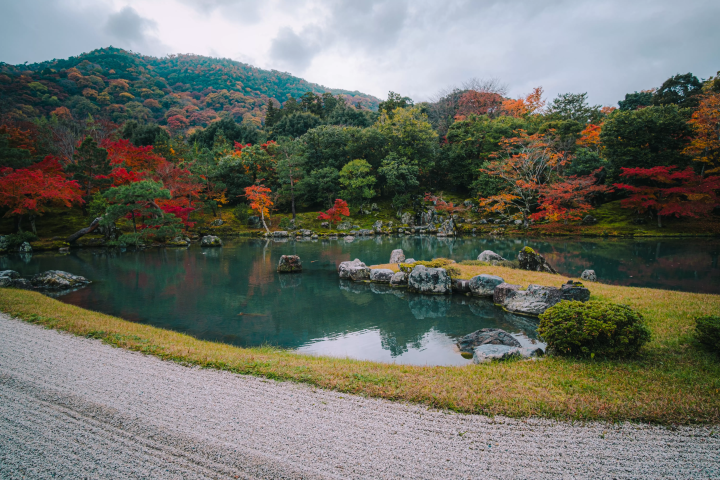
Sogenchi, the Japanese garden at Tenryuji, is a masterpiece of landscape design, originally created in the 14th century by the renowned garden master Muso Soseki.
Its layout features a tranquil pond reflecting the surrounding mountains, elegantly placed rocks, and carefully pruned pine trees.
The garden is wheelchair accessible, with flat, well-maintained pathways that make navigation easy. While beautiful year-round, the garden truly shines in autumn, when vibrant maple leaves mirror their fiery colors on the pond’s surface.
In spring, cherry blossoms create a stunning visual, while summer’s lush greenery and winter’s snow-dusted scenery add seasonal charm.
The Cloud Dragon Painting in the Hatto Hall
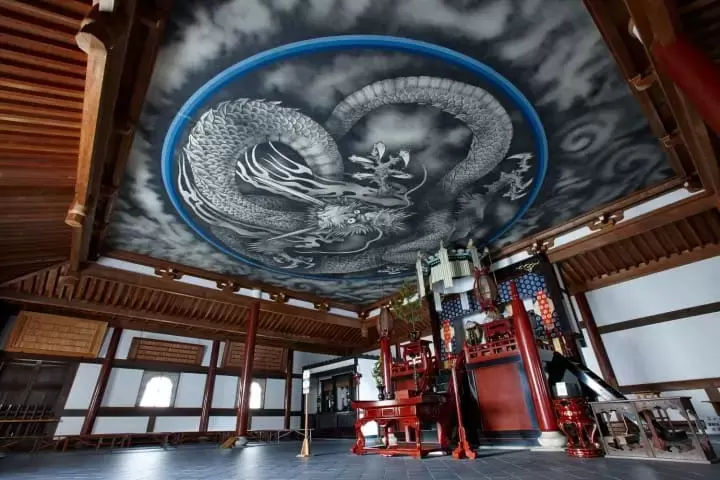
Picture courtesy of ©JNTO
The Hatto (Dharma) Hall of Tenryuji houses a stunning ceiling painting of a Cloud Dragon, created by artist Matazo Kayama in 1997.
This impressive artwork depicts a dragon glaring in all directions, symbolizing the temple’s protective spirit. The dynamic brushstrokes and the fierce expression of the dragon make this hall a captivating spot for art and culture enthusiasts.
A unique feature of the painting is that the dragon appears to be looking at the viewer from any position within the room. To learn more about this magnificent work of art, please visit the official website of Tenryuji Temple.
How Long to Spend at Tenryuji Temple
Spending approximately one to two hours at Tenryuji allows for a relaxed exploration of its historic halls and stunning garden.
This timeframe provides enough time to enjoy a leisurely walk through Sogenchi Garden, taking in the tranquil pond and seasonal foliage, as well as to visit the main hall and the Dragon Painting Hall.
If you plan to visit nearby attractions such as the bamboo grove or Togetsukyo Bridge, consider allocating half a day to fully experience the area.
Suggested Itinerary in Arashiyama with Tenryuji
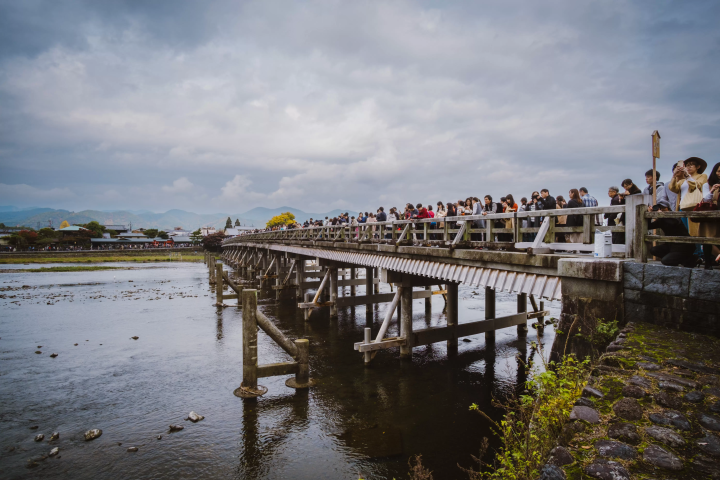
Start your day at Tenryuji Temple, exploring its beautifully landscaped garden and the main hall. Allow about an hour to fully enjoy the serene atmosphere.
Afterward, exit through the north gate, which leads directly to the Arashiyama Bamboo Grove—just a 5-minute walk. Wander through the towering bamboo stalks and capture some stunning photos as sunlight filters through.
Next, take a 15-minute walk to the iconic Togetsu-kyo Bridge, where you can enjoy the scenic view of the Katsura River framed by lush hills.
For lunch, try one of the traditional restaurants along the riverbank, offering local specialties such as yudofu (tofu hot pot) or soba noodles.
In the afternoon, visit the Fukuda Art Museum, which boasts an impressive collection of classic and modern Japanese art.
Families with children should also consider Monkey Park Iwatayama, a popular place to observe wild monkeys.
Conclude your day at Okochi-Sanso Villa, which offers panoramic views of the surrounding area, before heading back to Kyoto Station.
Restaurants near Tenryuji Temple in Kyoto
Just a short walk from Tenryuji, Sushi Naritaya offers a cozy, welcoming atmosphere, making it an ideal spot for a relaxing lunch after sightseeing.
This hidden gem serves fresh, reasonably priced sushi sets, including options like tuna, salmon, and seasonal specialties, all beautifully presented. With English menus and a family-friendly vibe, it’s perfect for both first-time visitors and seasoned sushi lovers.
Arashiyama Udon Ozuru specializes in handmade udon noodles crafted fresh daily. Known for their soft, silky texture, the menu features Kyoto specialties such as yuba (tofu skin) and namafu (wheat gluten), offering a light yet satisfying meal in a traditional setting. With its family-friendly atmosphere, it’s an excellent place to relax and refuel after exploring the temple and bamboo grove.
Another great choice is Yudofu Sagano provides a serene dining experience in a traditional Japanese setting. Their specialty, yudofu—tofu simmered gently in a delicate broth—is served with seasonal side dishes, offering a light yet satisfying meal.
Chikurintei offers a modern twist on Kyoto-style ramen in a cozy, bamboo-themed setting. The menu features clear chicken broth ramen topped with rare pork chashu, and for a luxurious option, there’s also Ise-ebi (spiny lobster) ramen.
Tucked away in a renovated 210-year-old thatched-roof house near Tenryuji, Bread, Espresso & Arashiyama Garden offers a serene café experience that blends traditional architecture with modern comforts.
Guests can relax on tatami mats or at terrace seats overlooking a tranquil garden, enjoying signature dishes such as fluffy French toast, egg sandwiches, and seasonal desserts. Opening at 8:00 AM, it’s an ideal spot for breakfast or a mid-morning break while exploring Arashiyama.
Enjoy Exploring Tenryuji Temple
With its beautiful garden, Zen art, and historical background, Tenryuji Temple is one of the places that should not be missed in Kyoto, especially when visiting the Arashiyama area. We hope you enjoy exploring this treasure trove of Japanese culture.
Hotels near Tenryuji Temple
Read also
Main image by Pixta
Travel writer and assistant editor at MATCHA with extensive travel around the Osaka, Kyoto, and Wakayama areas. A Kansai insider who knows their Akashiyaki from their Takoyaki, Iain enjoys getting authentic stories from traditional craftspeople and interesting creators. Particularly fond of temples and shrines, Iain delves deep into the crossroads of tradition and modernity in his eight-plus years living and writing about Japan.





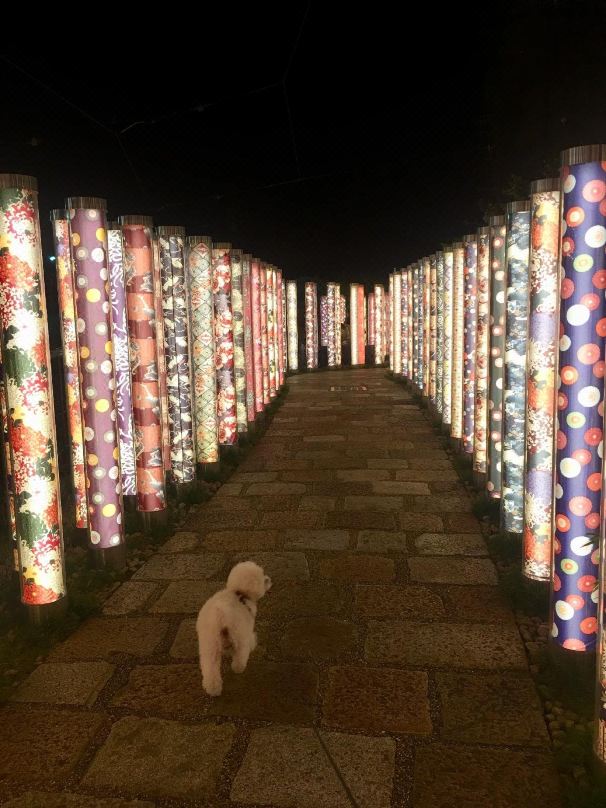

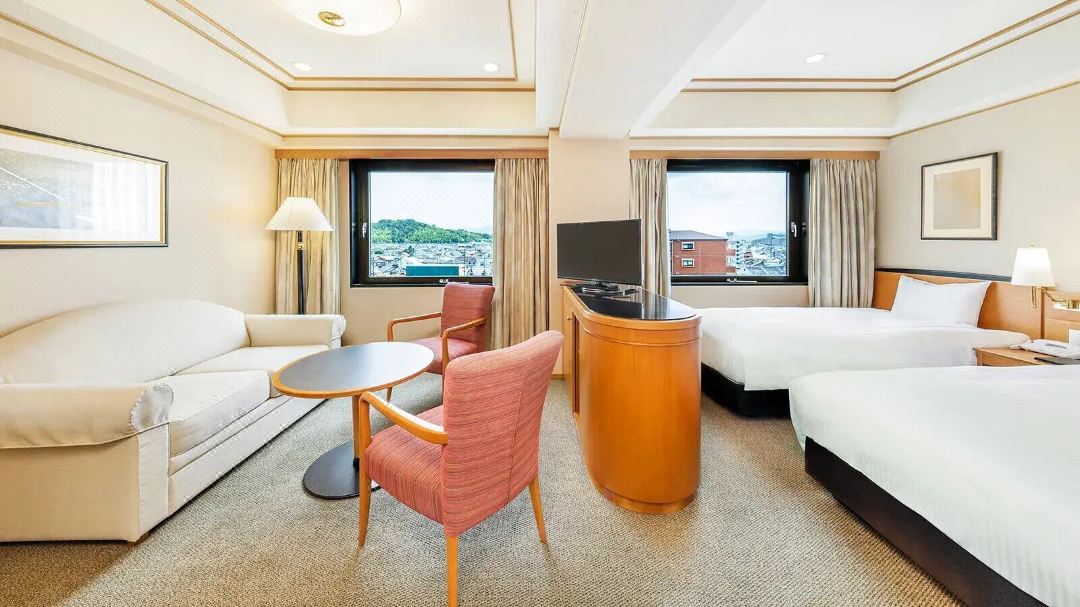
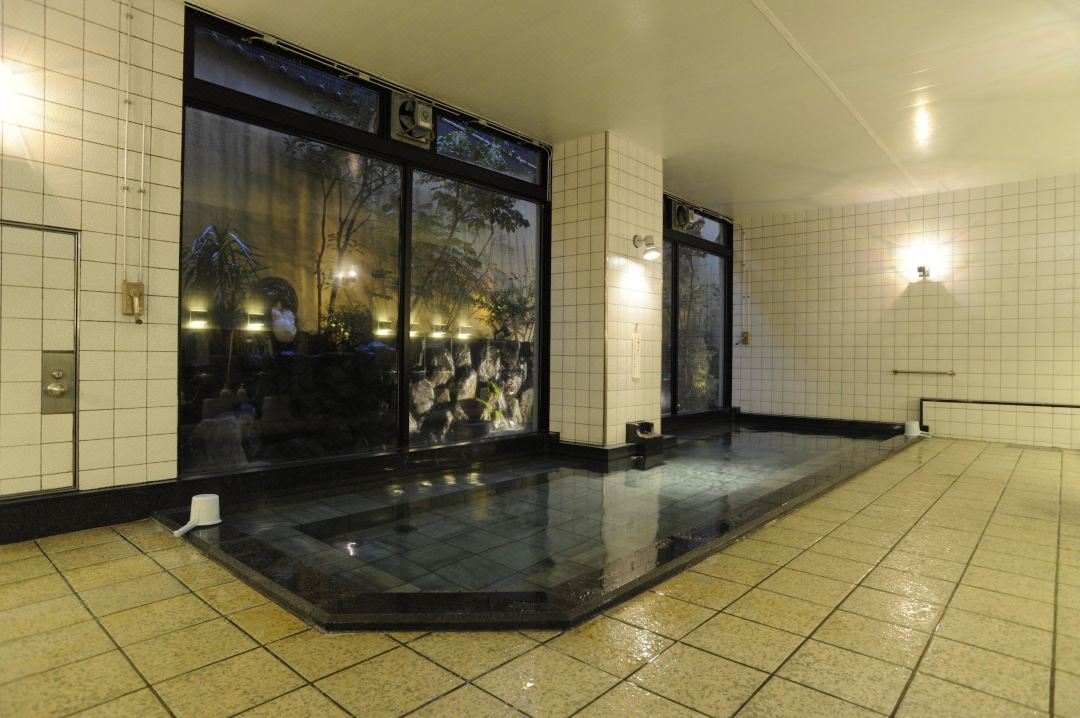





















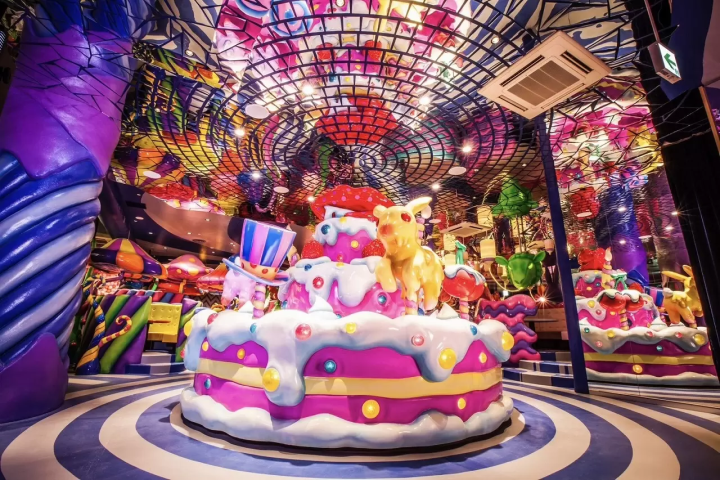
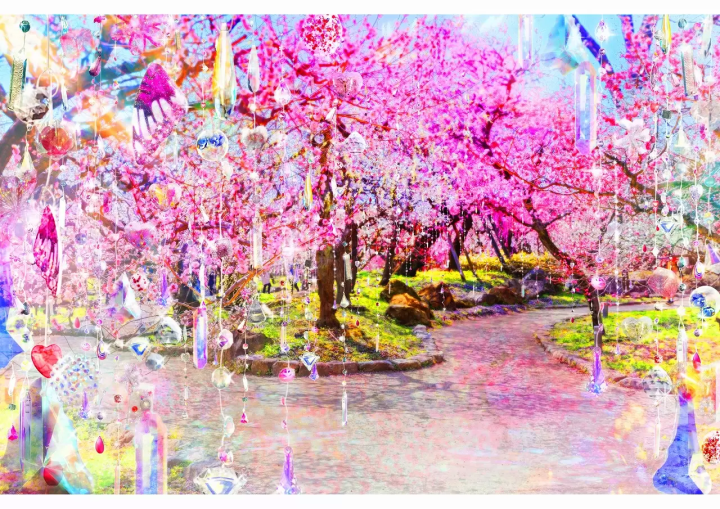
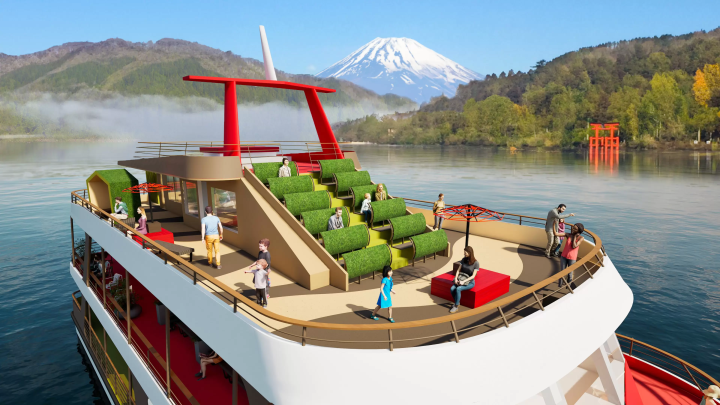

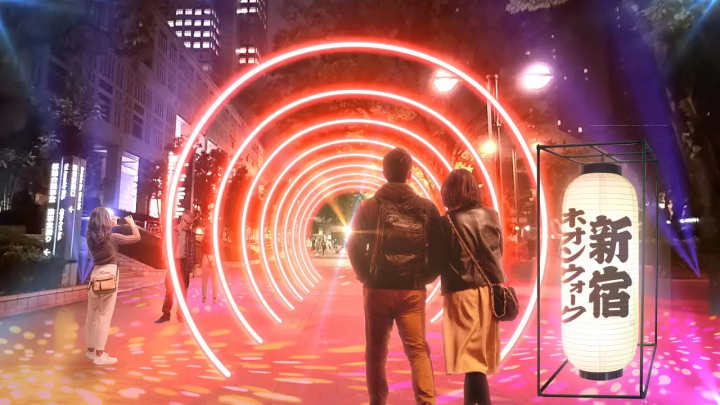



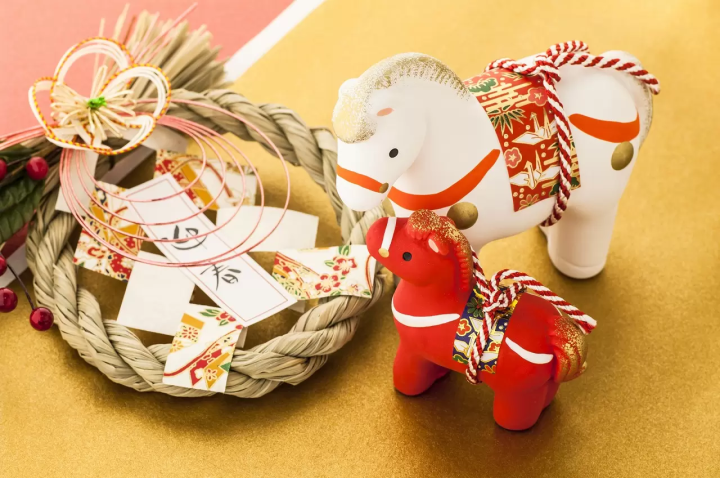

![[2026] Top 5 Strawberry Picking Spots in Tokushima, Naruto| Farms and Access Guide for January to May](https://resources.matcha-jp.com/resize/720x2000/2025/03/06-227165.webp)


